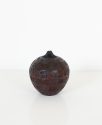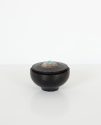Gorst duPlessis, born on April 8, 1938, in Walton on Thames, Surrey, UK, had a multifaceted life that encompassed medicine and art. He pursued his education in South Africa and the United States, ultimately becoming a radiologist. DuPlessis worked diligently in the medical field for 43 years, with a significant portion of his career spent as the chief radiologist at Ochsner-St. Anne Hospital in Raceland, Louisiana. In 2013, he retired from his medical career.
However, retirement marked the beginning of a new chapter for duPlessis. He had a deep-seated passion for woodworking, sculpture, and furniture building that had been nurtured since the 1950s. Over the course of two decades, he dedicated himself to perfecting his woodworking skills, often working with exotic hardwoods, precious metals, and semi-precious stones. Notably, he possessed an 1842 Holtzapffel ornamental lathe, a cherished tool in his workshop.
DuPlessis was a devoted family man who found immense joy in his artistic pursuits. He had a network of fellow woodturner artists and colleagues from across the country, which allowed him to fully express his artistic talents and explore various design concepts. His artistic creations were widely recognized and included in the permanent collections of prestigious institutions like the Smithsonian and the New Orleans Museum of Art.
In addition to his woodturning art, duPlessis left a mark on Tulane University, having designed the Academic Mace used in their Graduation Ceremony. He was represented locally by the Arthur Roger Gallery and made significant contributions to the world of woodturning and art.
DuPlessis’ artistic journey was characterized by his constant pursuit of change and his ability to draw from his intuition and previous experiences. He approached his work as a student of the history of turning, finding relaxation and passion in the process. His dedication to both the practice of medicine and the art of woodturning reflected his unwavering commitment to his passions throughout his life.






















